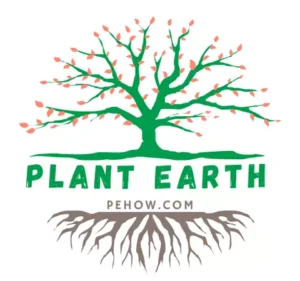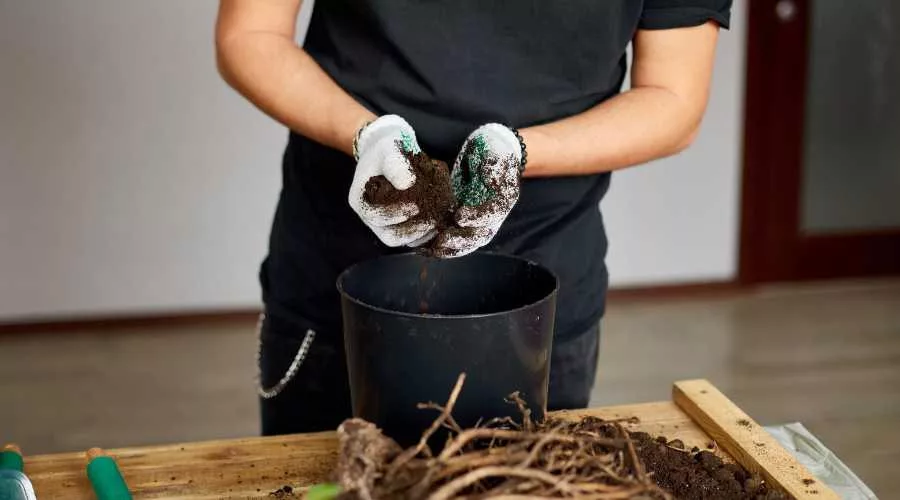Yes, you can reuse soil from a dead plant to save money and reduce waste. Reusing soil can be beneficial for future plants if you take certain precautions.
By following proper procedures, you can ensure that the soil is free from diseases and pests that may have caused the initial plant’s death. This can include removing any dead plant material and sterilizing the soil before reusing it. Additionally, amending the soil with organic matter and nutrients can help replenish its fertility.
Overall, reusing soil can be a sustainable and cost-effective practice in gardening and landscaping.
Understanding The Reusability Of Soil
Soil from a dead plant can be reused after following certain steps. By removing any debris or dead roots and replenishing nutrients, you can revive the soil and use it for future plantings.
When it comes to reusing soil from a dead plant, there are a few factors to consider before diving in. Evaluating the condition of the dead plant’s soil is essential to ensure its viability for future use. Let’s explore these factors below:
Factors To Consider Before Reusing Soil:
Nutrient Content:
- Check if the soil still contains adequate nutrients to support plant growth.
- Analyze the levels of essential nutrients like nitrogen, phosphorus, and potassium.
PH Level:
- Determine the soil’s pH level to assess its acidity or alkalinity.
- Some plants thrive in acidic soil, while others prefer alkaline conditions.
Drainage:
- Verify if the soil provides proper drainage.
- Excessively compacted or waterlogged soil can hinder the growth of new plants.
Disease and Pest Risk:
- Examine the dead plant’s soil for signs of diseases or pests.
- Soil-borne pathogens or pests can potentially harm new plants.
Organic Matter Decomposition:
- Assess the extent of organic matter decomposition in the soil.
- Decomposed organic matter enhances soil fertility and structure.
Evaluating The Condition Of The Dead Plant’s Soil:
Remember, reusing soil can be a cost-effective and sustainable practice, but it’s crucial to ensure its suitability. Evaluate the soil’s nutrient content, pH level, drainage, disease and pest risk, and organic matter decomposition. Additionally, visually inspect the soil, consider its smell and texture, and be wary of weed seeds and the previous plant’s requirements.
Visual Inspection:
- Examine the texture and color of the soil.
- Ensure it is well-aerated, loose, and friable.
- Avoid using soil that appears compacted, clayey, or sandy.
Smell:
- Give the soil a sniff test.
- Foul odors may indicate disease or rotting matter.
Soil Texture:
- Rub the soil between your fingers to assess its texture.
- The ideal soil should be crumbly and have a good balance of sand, silt, and clay.
Weed Seeds:
- Keep an eye out for potential weed seeds in the soil.
- To prevent future weed infestation, avoid reusing soil containing weed seeds.
Previous Plant’s Requirements:
- Consider the specific requirements of the previously grown plant.
- Some plants may deplete certain nutrients or leave residues that affect subsequent plant growth.
By taking these factors into account, you can make an informed decision about reusing soil from a dead plant.
Preparing The Soil For Reuse
You can reuse soil from a dead plant by preparing it properly. Make sure to remove any dead plant material, amend the soil with organic matter, and sterilize it if necessary to prevent the spread of diseases or pests. By following these steps, you can successfully reuse soil and promote healthy plant growth.
When a plant dies, it can be disheartening, but don’t let that valuable soil go to waste! Reusing soil from dead plants is not only environmentally friendly, but it can also save you money. However, before reusing the soil, it’s important to take a few steps to revitalize it and ensure it’s in optimal condition for future plantings.
Here are the steps you should follow to rejuvenate your soil for reuse:
Steps To Revitalize Soil For Reuse:
- Remove any debris: Start by removing any dead plant material, rocks, or weeds from the soil. Clearing out any unwanted debris will help create a healthier environment for your new plants.
- Break-up clumps: Over time, soil can become compacted, making it difficult for plant roots to penetrate and receive the necessary nutrients. Use a garden fork or spade to gently break up any clumps of soil. This will improve drainage and allow air to circulate more effectively.
- Test the pH levels: Different plants thrive in different pH levels, so it’s essential to test the soil’s acidity or alkalinity. You can use a pH testing kit available at garden centers or send a sample to a soil laboratory for analysis. Adjusting the pH levels can help create an optimal growing environment.
- Amend the soil: To replenish the lost nutrients and enhance fertility, amend the soil with organic matter. Consider adding compost, well-rotted manure, or peat moss to improve the soil’s structure, water retention, and nutrient content.
- Mix in additional ingredients: Depending on the needs of your specific plants, you may need to add other ingredients to the soil. For example, if the soil lacks drainage, you can incorporate coarse sand or perlite. If the soil is heavy, adding vermiculite or coconut coir can help improve its texture.
- Provide adequate moisture: Before reusing the soil, ensure it is adequately moistened. Thoroughly water the soil, ensuring it is evenly moist throughout. This will help activate the microorganisms present in the soil, promoting healthy nutrient cycling.
Now that you have prepared the soil, it’s time to focus on techniques that can further improve its structure and fertility:
Techniques For Improving Soil Structure And Fertility:
- Crop rotation: Rotating crops is an excellent technique to avoid nutrient depletion and minimize the risk of pests and diseases. By changing the type of plants grown in the soil, you can maintain a better balance of nutrients and reduce the buildup of pathogens.
- Cover cropping: Planting cover crops, such as legumes or grasses, during periods of soil inactivity can help suppress weeds, retain moisture, and add organic matter when tilled under. This technique improves soil structure and provides natural sources of nitrogen.
- Mulching: Applying organic mulch, like straw, wood chips, or leaves, helps maintain soil moisture, control temperature fluctuations, prevent weed growth, and provide a slow release of nutrients as it decomposes.
- Composting: Creating a compost pile using kitchen scraps, yard waste, and other organic matter is an excellent way to produce rich, nutrient-dense compost. Incorporating compost into the soil improves its structure, increases water-holding capacity, and stimulates beneficial microbial activity.
- Avoid over-fertilizing: While it’s important to provide your plants with essential nutrients, over-fertilizing can have adverse effects on soil health. Excess fertilizer can lead to nutrient imbalances, water pollution, and harm beneficial soil organisms. Always follow recommended dosage guidelines.
By following these steps to revitalize your soil and implementing techniques to improve its structure and fertility, you can reuse soil from a dead plant successfully. Not only will this save you money, but it will also promote sustainable gardening practices and lead to healthier plants in the future.
Proper Disposal Of Dead Plant Soil
Yes, you can reuse soil from a dead plant, but it is important to ensure proper disposal to prevent the spread of diseases or pests. Consider sterilizing the soil or mixing it with fresh soil before reusing it for another plant to maintain healthy growth.
When a plant dies, you may wonder what to do with the soil it was growing in. While it may be tempting to reuse the soil for a new plant, it’s essential to consider the potential risks and best practices for soil disposal.
In this section, we will explore safe methods for disposing of unusable soil and eco-friendly alternatives you can consider.
Safe Methods For Disposing Of Unusable Soil:
- Bag and dispose: Place the soil from the dead plant in a plastic bag and seal it tightly before throwing it away with your regular household waste. This prevents any potential diseases or pests from spreading.
- Mix with compost: If the soil is still relatively healthy, you can mix it with compost, which will help break down any organic matter present. This mixture can be used for non-edible plants or enriching garden beds.
- Contact local waste management: Some municipalities have specific guidelines for soil disposal. Get in touch with your local waste management authorities to inquire about any specific instructions or dedicated disposal sites for soil.
Eco-Friendly Alternatives For Soil Disposal:
- Composting: Instead of discarding the soil, consider composting it. This eco-friendly method allows the organic matter to decompose naturally and enrich your compost pile. You can then use the compost for fertilizing your garden or potted plants.
- Donate to community gardens: If the soil is in good condition and free from contaminants, consider donating it to a community garden. Many community gardens are often in need of soil for their projects and would greatly appreciate your contribution.
- Reuse for non-edible plants: If the soil is still relatively nutrient-rich and you’re confident it’s free from diseases or pests, you can reuse it for non-edible plants in your garden. This helps reduce waste and saves you money on buying new soil.
- Rejuvenate with amendments: Another option is to rejuvenate the soil by adding organic amendments such as compost, peat moss, or perlite. These additions can help improve the texture and fertility of the soil, making it suitable for new plants.
Remember, while it may be possible to reuse soil from a dead plant, it’s crucial to assess its condition and potential risks before doing so. By following proper disposal methods or exploring eco-friendly alternatives, you can make the most of your resources while ensuring a healthy growing environment for future plants.
Conclusion
Reusing soil from a dead plant can be a practical and environmentally friendly practice. By following a few steps, such as identifying any diseases or pests before reusing the soil, replenishing nutrients, and improving the soil structure, you can successfully repurpose the soil for future plantings.
This not only saves you money but also reduces waste by minimizing the need for new soil. Moreover, reusing soil can also benefit your new plants by providing them with a familiar environment and the organic matter needed for healthy growth.
However, it’s essential to remember that not all soils can be reused, especially if they are infested with a severe disease or contain toxic substances. So, it’s important to exercise caution and evaluate the condition of the soil before reusing it.
By taking these precautions, you can enjoy the benefits of reusing soil from a dead plant while ensuring the success of your future plantings.



